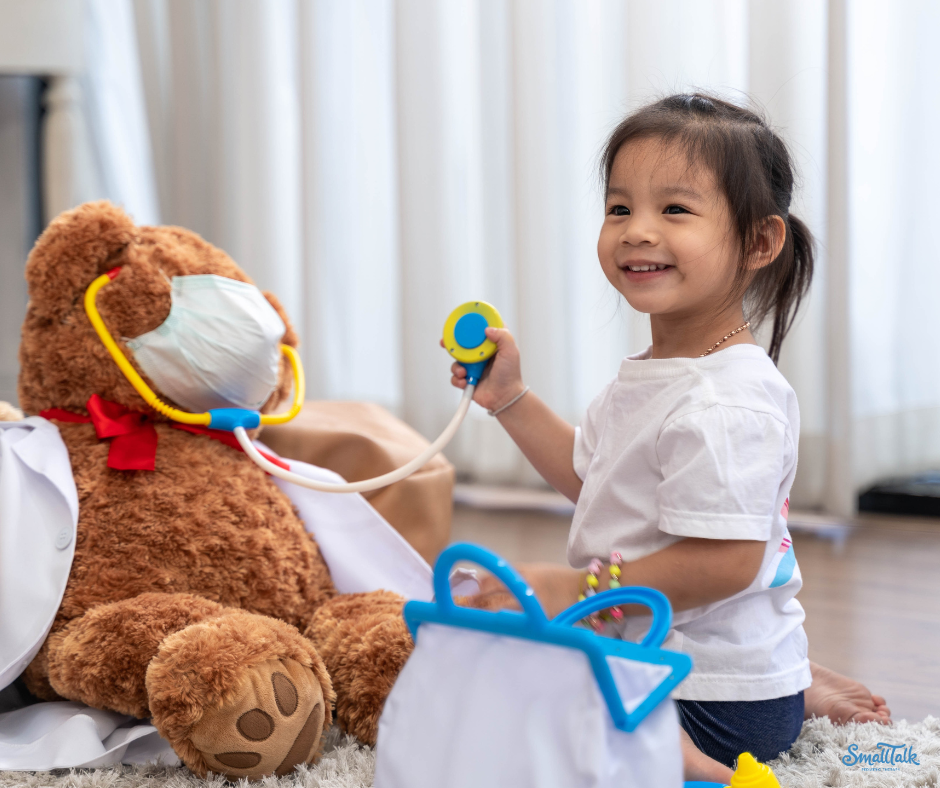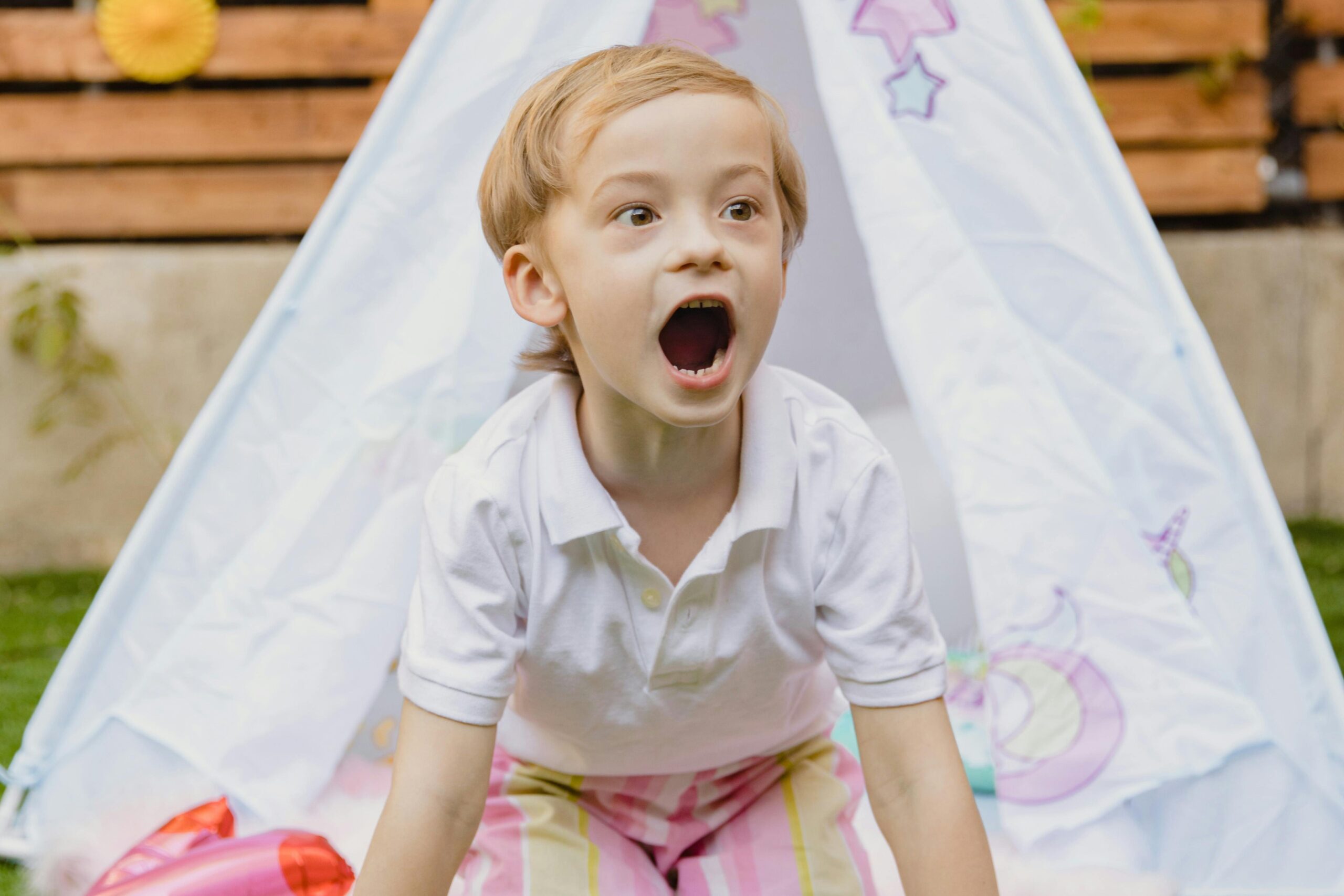Holiday travel can bring excitement and a bit of chaos. For children with sensory needs, unfamiliar environments, loud sounds, and changes in routine can make the experience overwhelming. At SmallTalk Pediatric Therapy, we’ve helped many families prepare for smooth and successful trips by planning ahead, creating structure, and bringing familiar tools from home. Whether you’re heading across town or across the country, these travel tips can help make your journey calmer, happier, and more connected.
1. Prepare Your Child with Visuals and Stories
Children who thrive on routine often benefit from knowing what to expect before a trip. Creating a simple visual schedule or social story can help your child understand each step from packing, driving, flying, arriving, and unpacking. Research shows that using visuals can help reduce anxiety and improve understanding of transitions in children with developmental differences.
Walk your child through what the day might look like, using photos or drawings. You might even watch a short video about airports or road trips together to make the process more predictable and less intimidating.
2. Build a Sensory Travel Kit
Long trips can expose your child to new smells, sounds, textures, and sights, all of which may be overstimulating. A sensory travel kit gives your child tools to regulate and find comfort along the way.

Try including:
- Noise-canceling headphones
- A small weighted lap pad or favorite blanket
- Sunglasses or a hat to reduce bright lighting
- Fidget toys or chewy jewelry
- Familiar snacks and a water bottle
Every child’s sensory system is unique, so let them help choose what to pack. Having control over their environment even a little can make travel feel more manageable.
3. Choose Travel Times and Routes Thoughtfully
Timing can make a big difference. Traveling during quieter hours, such as early mornings or mid-week days, often means fewer crowds and shorter lines. When driving, plan frequent rest stops where your child can stretch, jump, or move before getting back in the car.
It can also help to avoid rushing. Extra time at each step, boarding, restroom breaks, or security, gives everyone breathing room and helps prevent meltdowns from stress or fatigue.
4. Maintain Familiar Routines
Even away from home, maintaining small pieces of your regular routine can help your child feel grounded. Try to keep consistent meal and sleep times, and bring familiar bedtime items like a favorite stuffed animal or book.
Keeping a short bedtime ritual, such as reading a story together, is not just comforting, it also helps your child transition more easily to sleep in new environments. Predictability builds confidence and regulation.
5. Plan for Quiet Spaces and Calm Breaks
During busy holiday events, identify quiet spots in advance where your child can take breaks. Many airports, museums, and large public spaces now offer sensory-friendly rooms or low-stimulation areas.
If you’re visiting relatives, ask ahead if there’s a calm room or corner your child can use when they need downtime. You can also establish a “quiet signal” with your child, a hand gesture or phrase that means, “I need a break.” Giving them a way to communicate their needs can prevent sensory overload before it escalates.
6. Use Travel as a Language and Learning Opportunity
Every part of your journey can help build speech, language, and social skills. Narrate what’s happening: “We’re putting our bags in the car,” or “The airplane is taking off!” Describe what you see, hear, and feel to model rich vocabulary.
Ask open-ended questions:
- “What do you think we’ll see when we land?”
- “Can you tell me what’s outside your window?”
These small interactions encourage language use in real-world situations. For children receiving speech or occupational therapy, this kind of meaningful play and communication helps generalize skills beyond the clinic.
7. Be Flexible and Celebrate Small Wins
Even the best-planned trips come with surprises, delays, detours, or changes. Flexibility is key. Offer praise for small victories: getting through a noisy terminal, waiting patiently in line, or using coping tools independently. A calm, encouraging tone helps your child feel secure, even when things don’t go perfectly. Remember that your goal isn’t a flawless trip, it’s connection, confidence, and fun along the way.
Holiday travel with children who have sensory needs doesn’t have to be stressful. With thoughtful preparation, familiar routines, and a bit of flexibility, you can create positive, memorable experiences for your family. At SmallTalk, we support San Diego families, whether at our clinics in La Mesa, Mission Valley, and Scripps Ranch, or through virtual sessions, so your child can keep growing and thriving wherever the season takes you.
Safe travels and happy holidays!











